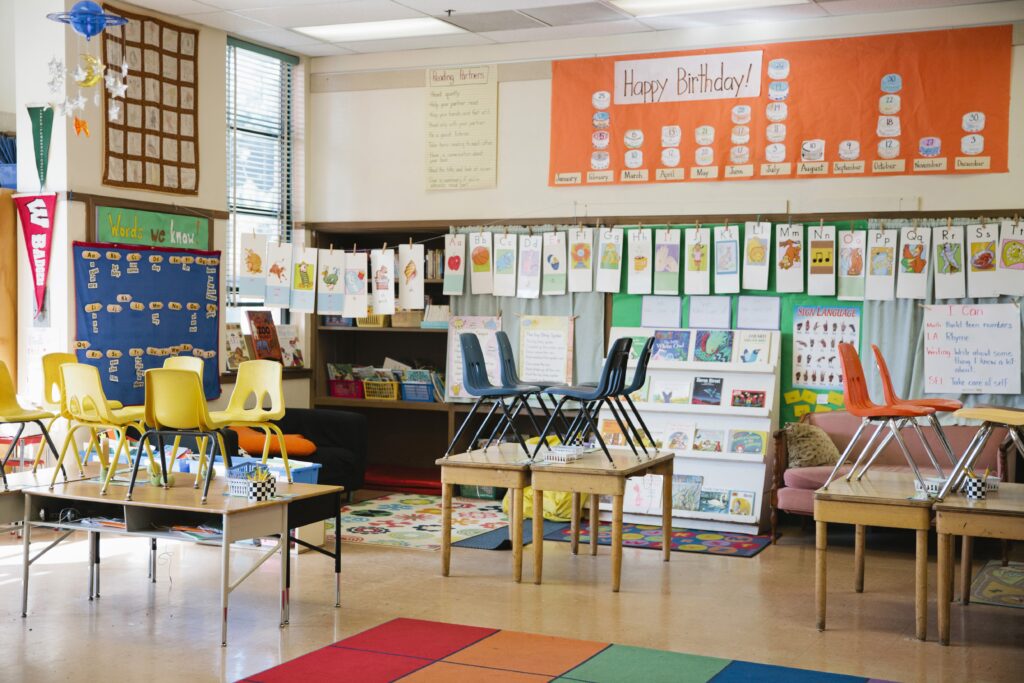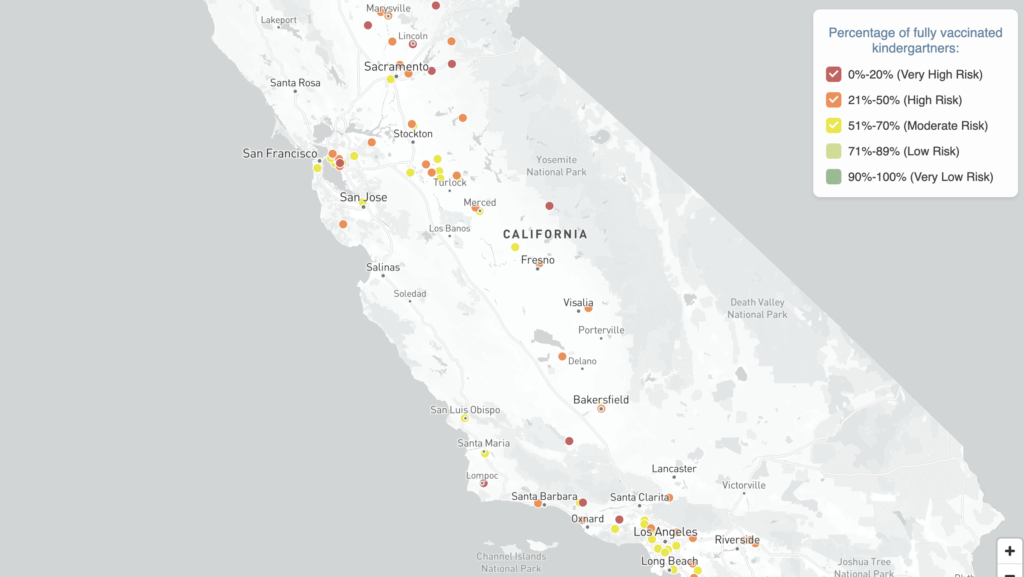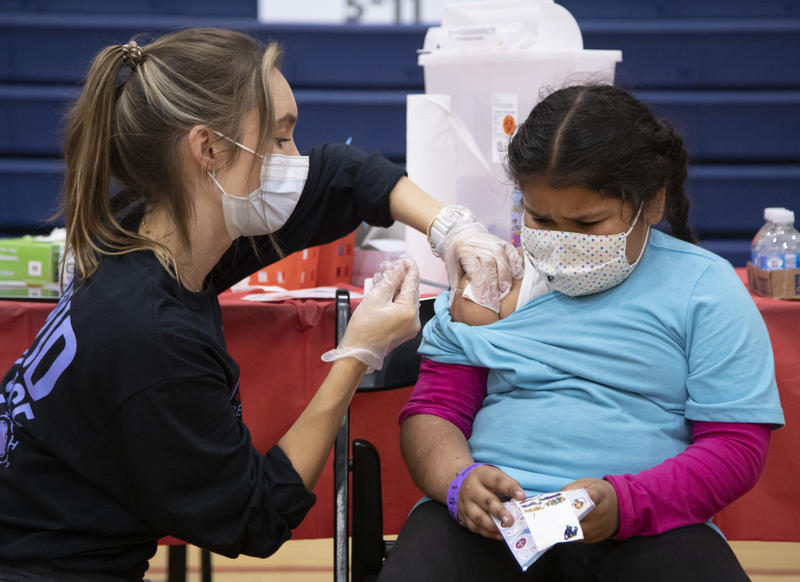
Key Takeaways from pPIC Education survey
- Five years ago, Californians thought schools were headed in the right direction; they no longer do.
- Most adults say teaching basics should be the No. 1 goal of school; parents of students disagree.
- Nearly all in the survey agree that teachers’ pay is too low.
Californians’ confidence in their public schools and approval of how Gov. Gavin Newsom and the Legislature are handling public education have fallen sharply since the Covid pandemic, according to an annual survey on K-12 education released Thursday by the Public Policy Institute of California (PPIC). Half believe that the public school system is headed in the wrong direction.
The PPIC survey of 1,591 adults in English and Spanish also found widespread disagreement and overall concern with President Donald Trump’s actions on schools.
Nearly three-quarters of Californians oppose Trump’s executive order to close the U.S. Department of Education.
Two-thirds of adults are very or somewhat concerned about increased federal immigration efforts against undocumented students, and majorities support their local districts’ self-designation as “safe zones” from immigration enforcement.
Democratic and Republican respondents were sharply divided on this and many issues in the survey, however.
An exception is voters’ agreement with Trump’s executive order to ban transgender participation in sports in schools and colleges. That resonates with 65% of adults and 71% of public school parents. They back requiring transgender athletes to compete on teams matching the sex assigned at birth, not the gender they identify with — a position in sync with Newsom’s, but not with many of the state’s Democratic leaders.
PPIC is a prominent nonpartisan research and public policy organization that explores issues of the environment, politics, economics and education, and regularly surveys Californians on their views. The latest education survey has a margin of error of 3.1 percentage points, meaning that 95 times out of 100, the results will be within 3.1 percentage points of what they would be if all adults in California were interviewed. The survey was administered between March 27 and April 4.
How the state is handling schools
In April 2020, weeks after Covid first emerged, 73% of survey respondents said they approved of how Newsom handled the K-12 system, and 26% disapproved.
Five years later, approval has fallen to 50% while disapproval has risen to 46%. Newsom registered majority support among Black and Asian Americans, and the least support among white people (43%). While 73% of Democrats approve of his performance, only 13% of Republicans and 44% of independents do.
Views of the Legislature’s handling of schools were similar: a high-water mark of 69% approval and 29% disapproval in April 2020, and an even 48%-48% split in April 2025, with 5% saying they didn’t have an opinion.
Mark Baldassare, director of PPIC’s statewide surveys, said the approval numbers of elected officials fluctuate based on “how people feel the system in general is working and if state officials in charge are meeting the moment.”
“I remember a lot of the polling numbers around the country at the beginning of the pandemic were showing there was a rallying around our leaders and maybe a little bit of wishful thinking that we’re going to get through this,” he said.
The past five years have been tumultuous for schools. Since districts returned to school after more than a year in remote learning, recovery has been slow, as reflected by lower test scores, stubbornly high rates of chronic absences and measures of rising student depression and unwellness.
 Source: PPIC Statewide Survey 2025
Source: PPIC Statewide Survey 2025“It’s hard to blame Newsom and the Legislature. They’ve been very supportive of programs and funding for education,” said Carol Kocivar, past president of the California State PTA and a writer on education policy for ED 100, a parent education website.
“Schools have been through the wringer. Some districts are barely balancing budgets and are facing a teacher shortage and declining enrollment. All of these factors create perceptions of schools. Behavior problems and inability to pay attention from an addiction to social media don’t necessarily reflect what is happening in schools,” she said.
In past PPIC surveys, particularly after the Great Recession, when per-student funding in California was among the lowest in the nation, the public’s view was even lower. In 2015, only 35% of respondents approved of how the Legislature was handling education. When asked the same question in 2011, amid huge post-recession budget cuts, the approval rate was only 18%.
Similarly, in response to the question, “How much of a problem is the quality of education in K-12 schools today?” 35% of all respondents say it is a big problem in the latest survey. That’s down from 27% in April 2020, but lower than each of the previous 18 years. In both 2012 and 2016, for example, 58% of all respondents said that education quality was a problem, and in 2000, 53%.
Right or wrong direction?
In the latest survey, 45% of all adults say that the school system overall is generally going in the right direction, while 51% say it’s headed in the wrong direction. There is a partisan divide, with 65% of Democrats saying it’s in the right direction and only 16% of Republicans and 38% of independents agreeing.
That answer, too, is down from April 2020, when 62% of all respondents said the school system was going in the right direction and only 30% said it was headed in the wrong direction.
Asked to grade the quality of their local public schools from A to F, 12% of respondents assigned an A; 36% graded B; 33% graded C; 11% graded D, and 6% an F.
That’s down from the 20% who gave schools an A in 2018, the last time the question was asked.
Challenges facing schools
In the latest survey, respondents indicated that the challenges to schools — chronic absenteeism and declining enrollment, along with threats of wildfires and school shootings, a perennial worry — remain top of mind.
A majority of adults (55%) and almost half of public school parents (47%) are very concerned or somewhat concerned about chronic absenteeism (defined as a student’s absence on 10% or more of school days). More Black (32%) and Hispanic (24%) adults than whites and Asians (both 14%) say they are very concerned about the problem.
Since school funding is tied to attendance, more public school parents (68%) say they are very or somewhat concerned than all adults (61%) surveyed that declining enrollment would affect funding for their local public schools.
 Source: PPIC Statewide Survey 2025
Source: PPIC Statewide Survey 2025School financing
Asked about the current level of state funding in the latest survey, 48% say it is not enough, 34% say just enough, and 13% more than enough. Perhaps reflecting the huge one-time state and federal Covid relief aid, that number is down significantly since 2012 and in 2000, when 63% said funding was not enough.
At the same time, nearly all Californians say that the level of pay for teachers relative to living costs is either a big problem (38%) or somewhat of a problem (48%).
Vouchers: In 2002, California voters resoundingly rejected a ballot initiative to provide parents with state funding to send their children to a public or private school of their choice by a vote of 70% to 30%. The latest PPIC survey indicated 44% of likely voters favor a school voucher system, and 56% oppose it. However, 62% of public school parents, Black and Hispanic respondents, now say they too favor it.
Supporters of an alternative voucher plan to place an initiative for an education savings account on the statewide ballot in 2026.
School priorities: Asked what they think should be the most important goal of K-12 education, the top three priorities of all respondents are:
- Teaching students the basics including math, reading, and writing, 40%’
- Teaching students life skills (21%)
- Preparing students for college (16%)
In contrast, Hispanic Californians (27%) and public school parents (32%) say preparing students for college should be the top goal.
LCFF: In 2012, the Legislature passed the Local Control Funding Formula, which provides additional money to school districts with more English learners and low-income students. Each year, read a short summary of the formula, large majorities surveyed say they favor it (this year 66% of all respondents).
And yet each year, between 68% and 80% of respondents say they knew nothing at all about the landmark law, including this year 75% of all respondents and 67% of public school parents.
School districts are required to reach out to parents for their ideas on how to spend the funding. This year, two-thirds of all parents of school-age children – those with a college degree and those without, those earning more than $80,000 per year and those earning less – said their districts had failed to do so.

















